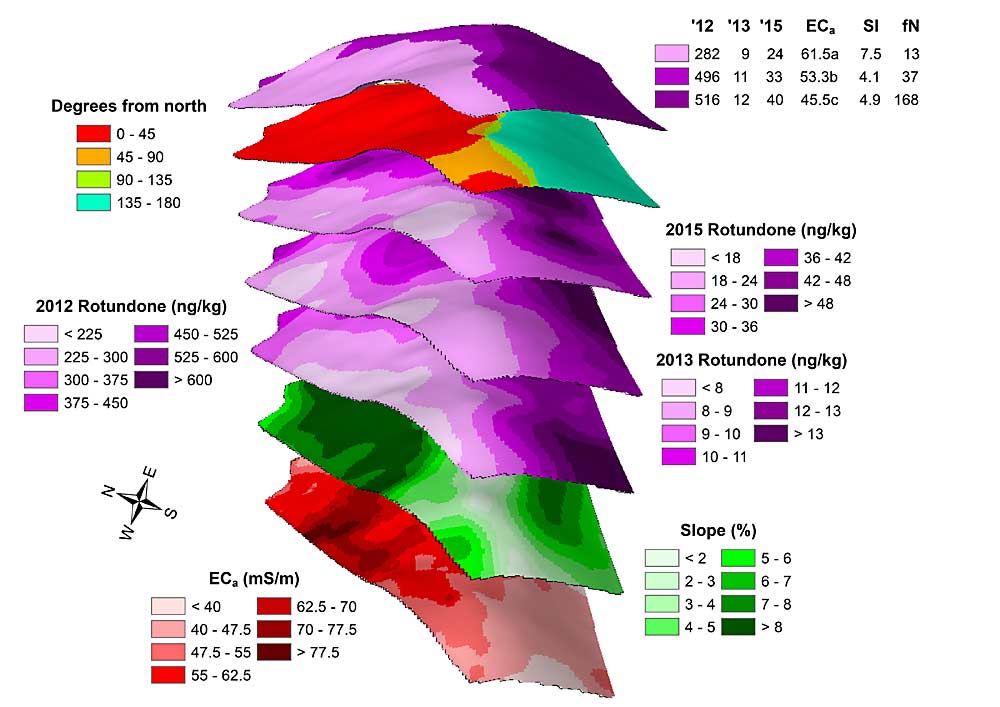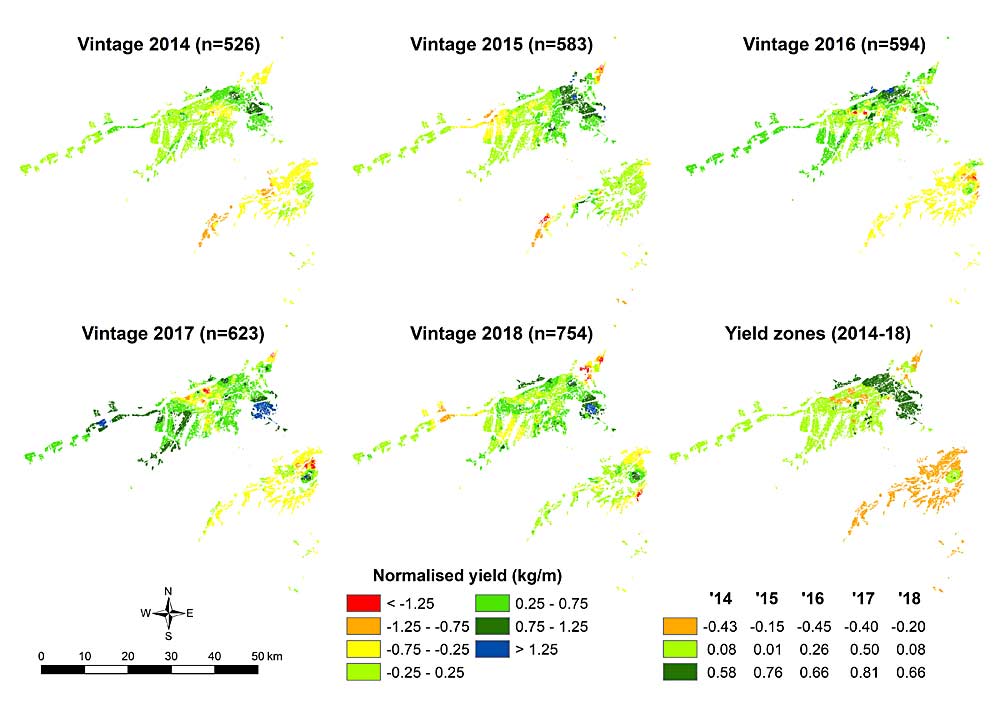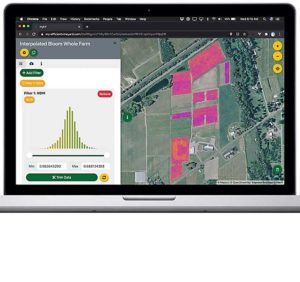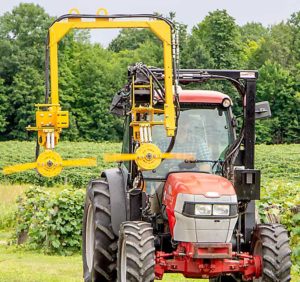
Australian scientist Rob Bramley literally wrote the book on precision viticulture. In 2006. But he also believes the wine industry, worldwide, is still in the early phase of figuring out how to use the approaches of precision agriculture to improve wines and profits.
Bramley, senior principal scientist at CSIRO, Australia’s national science agency, shared both his perspective from decades of research and his thoughts on how the field should move forward, when he gave a keynote talk on “Digital Approaches to Winegrowing” at the 2021 Precision Viticulture Symposium hosted by the American Society for Enology and Viticulture and the National Grape Research Alliance in June. Nick Dokoozlian, vice president of winegrowing research at E. & J. Gallo Winery and NGRA’s research chair, gave the second keynote on “The Promise and Challenge of Precision Viticulture.”
The symposium also included research talks and a grower panel.
Bramley started with a key definition: “The basic premise underpinning precision agriculture is that land is variable. Even in very small vineyards, the variation in vigor can be quite dramatic.”
Precision viticulture seeks to to measure that variability — in vigor, in soils, in yields, in nutrient needs — and then use that data to improve management decisions. “In a variable landscape, uniform management is a suboptimal strategy,” he said.
But from that central premise, Bramley and Dokoozlian presented two different visions for how to put precision into practice. Dokoozlian focused on how to translate the descriptive data into targeted management, such as how E. & J. Gallo is experimenting with variable-rate irrigation approaches to reduce vineyard variability and improve both growth and yield uniformity across a vineyard block, while Bramley shared a vision for how to understand and harness the variability to get the right grapes into the right wines.
“Our interest has been much more around selective harvesting and product streaming,” Bramley said. “The primary reason for engaging in precision or digital viticulture is to gain better control over the value chain.”
Understanding the variability and harvesting different zones for different markets at different prices can be highly profitable for winemakers. It’s working for estate wineries in Australia, he said, but seems to be a missed opportunity in most of the U.S. — where the grape payment system, in which most growers in a region expect a set price per ton for each cultivar, leaves little incentive for growers to look at their vineyards with an eye toward selective harvest.
Bramley shared results from research into how soil maps, yield maps and remote sensing maps of the canopy can be layered to divide vineyards into zones that produce grapes with measurable variation in quality. Split-picking those zones — targeting different wine tiers based on quality — can therefore increase the value of grape production. In one example, at Deakin Estate in the Murray Valley, Bramley’s research found that as long as the price difference is more than $39 per metric ton, it’s worthwhile for the grower to do the selective harvest, he said. It’s a similar scenario to what Gallo deals with in Lodi, California, he added.
In another vineyard study from the Grampians region, Bramley showed that the variation in the compound that gives some Shiraz a peppery flavor is spatially stable across the vineyard. That means the owners can map it once and market the different zones of grapes.
“Understanding this variation in terroir — and that’s exactly what we are talking about here, variation in terroir on a vineyard scale — that knowledge is worth about $90 a bottle in this particular example,” he said. “There’s nothing mythological about terroir, and there’s a huge opportunity in precision viticulture to understand terroir.”
Much of his research is now focused on describing terroir with data at both vineyard and regional scale, including better ways to define viticultural areas, he said in an interview after the presentation.
As an example, he shared yield maps of the entire Marlborough wine region, across several vintages. The spatial patterns of yield variation were quite stable over the years, corresponding to different soil types within the region and the differing climate in the northern and southern valleys, he said. That shows the regional value of precision viticulture.

Dokoozlian, whose address followed Bramley’s, described his approach as “state-of-the-art descriptive analytics.” But he wants to see the field of precision viticulture move beyond descriptive data to prescriptive data, as agronomic crops have.
“Let’s get beyond what Mother Nature gave us and get beyond just being able to recognize differences in growth and quality, and let’s get to prescriptive analytics so we can drive to the prescriptive quality tier,” he said. “We’re a long way away from that, but that’s really the promise of precision viticulture.”
Dokoozlian said soil moisture drives most of the yield differentiation they have found in E. & J. Gallo research, and that’s led him to focus on precision irrigation.
“We’re really beginning to recognize that even in highly manipulated irrigation systems, soil moisture content is more important than we realized,” he said, adding that variability in soil moisture is largely driven by spatial differences in soil texture and rooting depth.
He described variable-rate irrigation experiments that start with assessing vine vigor or canopy size using satellite imagery at the resolution of 30m-by-30m pixels, representing approximately one-fifth of an acre. This data showed that the variability in canopy size across the vineyard block was directly correlated with vine water use. An experimental variable rate drip irrigation system was installed which allowed each 30m-by-30m pixel to be irrigated independently — in both water volume and irrigation frequency — of the other pixels. This allowed irrigation levels to be optimized based on vine vigor, resulting in improved yields and water use efficiency.
“We can basically farm the block as a bunch of smaller blocks, gaining the efficiency of a large block, but also have the fine-tuning control of a much smaller block,” he said.
Such an approach is not currently cost effective on a commercial scale, he added, but he expects the technology is coming to make it viable.
“It’s going to take more applications like that that show some return,” he said, for precision viticulture to become common practice. “This is all fantastic technology.”
The resulting impact on vineyard performance has been positive, but researchers must still determine if the additional cost and complexity of the irrigation system is economically viable, he said.
In recent years, there’s been more focus on development of technologies, rather than research into how technologies can be applied to the vineyard production system, Bramley said. “As a consequence of that, we have a lot of solutions looking for problems,” he said.
To his mind, many of the key tools for profitable precision viticulture are already available and improving: yield prediction, yield monitoring and simple tools for data analysis. One example is the Precision Agriculture Tools plug-in for GIS programs developed by CSIRO to help growers use spatial data, which is similar to the myEV tools developed by Cornell Cooperative Extension. Such data tools help growers turn remote sensing imagery from pretty maps to useful information, he said.
On his wish list: sensors that could assess and map fruit quality metrics, such as anthocyanin or malic acid levels, along with an ongoing area of research.
“Much data is available, but its value and ability to be properly utilized is yet to be realized,” Bramley said. “If you don’t do anything else as a result of this seminar, ask yourself: Are we making the best use of that data?”
—by Kate Prengaman








Leave A Comment